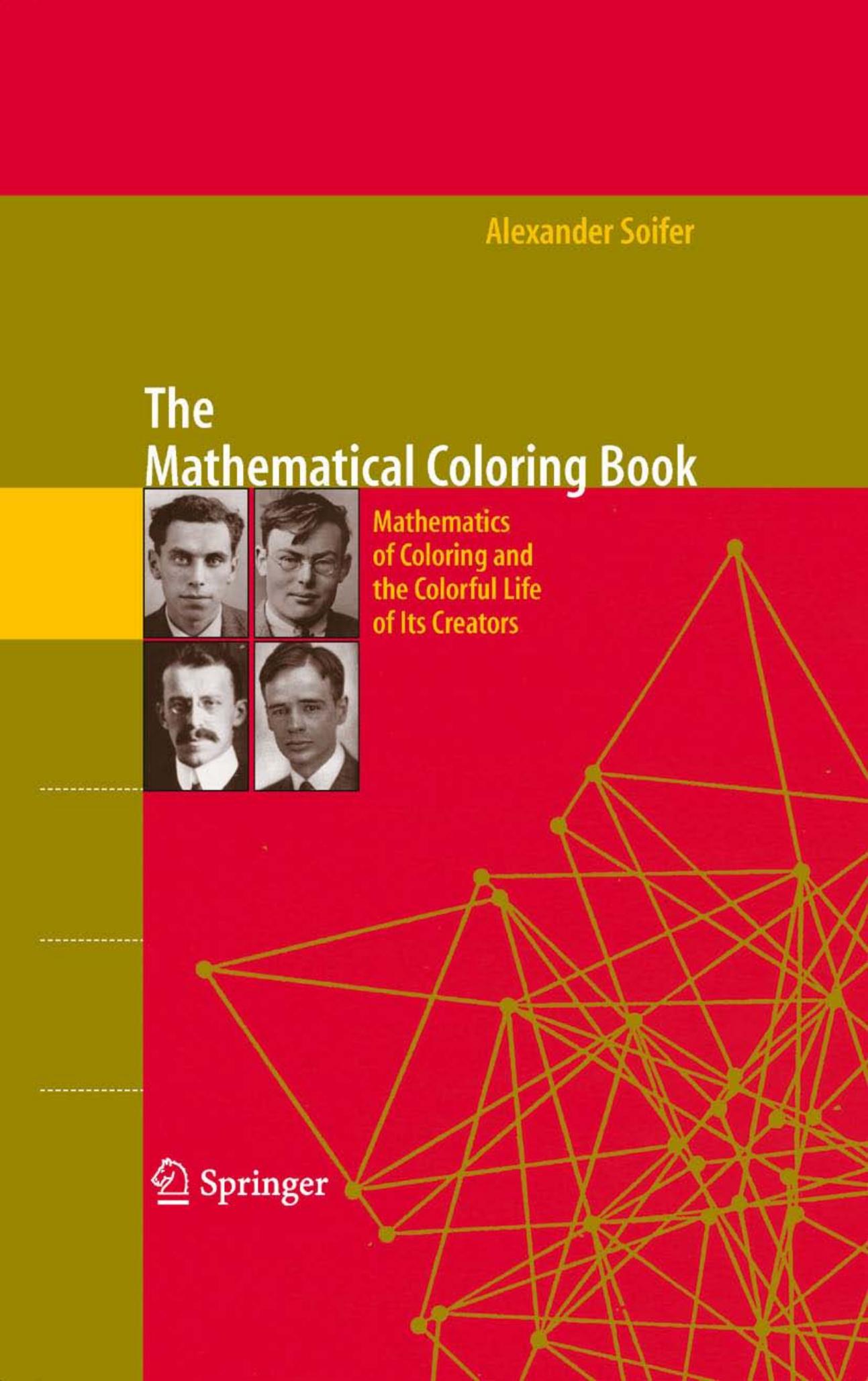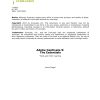The Mathematical Coloring Book Mathematics of Coloring and the Colorful Life of its Creators 1st edition by Alexander Soifer 1489996265 9781489996268
$70.00 Original price was: $70.00.$35.00Current price is: $35.00.
Instant download Mathematical Coloring Book Mathematics of Coloring and the Colorful Life of its Creators 1th The Wei Zhi after payment
The Mathematical Coloring Book Mathematics of Coloring and the Colorful Life of its Creators 1st edition by Alexander Soifer – Ebook PDF Instant Download/Delivery: 1489996265, 9781489996268
Full dowload The Mathematical Coloring Book Mathematics of Coloring and the Colorful Life of its Creators 1st edition after payment

Product details:
ISBN 10: 1489996265
ISBN 13: 9781489996268
Author: Alexander Soifer
This is a unique type of book; at least, I have never encountered a book of this kind. The best description of it I can give is that it is a mystery novel, developing on three levels, and imbued with both educational and philosophical/moral issues. If this summary description does not help understanding the particular character and allure of the book, possibly a more detailed explanation will be found useful. One of the primary goals of the author is to interest readers—in particular, young mathematiciansorpossiblypre-mathematicians—inthefascinatingworldofelegant and easily understandable problems, for which no particular mathematical kno- edge is necessary, but which are very far from being easily solved. In fact, the prototype of such problems is the following: If each point of the plane is to be given a color, how many colors do we need if every two points at unit distance are to receive distinct colors? More than half a century ago it was established that the least number of colorsneeded for such a coloring is either 4, or 5, or 6 or 7. Well, which is it? Despite efforts by a legion of very bright people—many of whom developed whole branches of mathematics and solved problems that seemed much harder—not a single advance towards the answer has been made. This mystery, and scores of other similarly simple questions, form one level of mysteries explored. In doing this, the author presents a whole lot of attractive results in an engaging way, and with increasing level of depth.
The Mathematical Coloring Book Mathematics of Coloring and the Colorful Life of its Creators 1st Table of contents:
Part I Merry-Go-Round
- A Story of Colored Polygons and Arithmetic Progressions
- 1.1 The Story of Creation
- 1.2 The Problem of Colored Polygons
- 1.3 Translation into the Tongue of APs
- 1.4 Prehistory
- 1.5 Completing the Go-Round
Part II Colored Plane
2. Chromatic Number of the Plane: The Problem
3. Chromatic Number of the Plane: An Historical Essay
4. Polychromatic Number of the Plane and Results Near the Lower Bound
5. De Bruijn–Erdos Reduction to Finite Sets and Results Near the Lower Bound
6. Polychromatic Number of the Plane and Results Near the Upper Bound
- 6.1 Stechkin’s 6-Coloring
- 6.2 Best 6-Coloring of the Plane
- 6.3 The Age of Tiling
- Continuum of 6-Colorings of the Plane
- Chromatic Number of the Plane in Special Circumstances
- Measurable Chromatic Number of the Plane
- 9.1 Definitions
- 9.2 Lower Bound for Measurable Chromatic Number of the Plane
- 9.3 Kenneth J. Falconer
- Coloring in Space
- Rational Coloring
Part III Coloring Graphs
12. Chromatic Number of a Graph
- 12.1 The Basics
- 12.2 Chromatic Number and Girth
- 12.3 Wormald’s Application
- Dimension of a Graph
- 13.1 Dimension of a Graph
- 13.2 Euclidean Dimension of a Graph
- Embedding 4-Chromatic Graphs in the Plane
- 14.1 A Brief Overture
- 14.2 Attaching a 3-Cycle to Foundation Points in 3 Balls
- 14.3 Attaching a k-Cycle to a Foundation Set
- 14.4 Attaching a k-Cycle to a Foundation Set of Type
- 14.5 Attaching a k-Cycle to Foundation Sets
- 14.6 Removing Coincidences
- 14.7 O’Donnell’s Embeddings
- 14.8 Appendix
- Embedding World Records
- 15.1 A 56-Vertex, Girth 4, 4-Chromatic Unit Distance Graph
- 15.2 A 47-Vertex, Girth 4, 4-Chromatic, Unit Distance Graph
- 15.3 A 40-Vertex, Girth 4, 4-Chromatic, Unit Distance Graph
- 15.4 A 23-Vertex, Girth 4, 4-Chromatic, Unit Distance Graph
- 15.5 A 45-Vertex, Girth 5, 4-Chromatic, Unit Distance Graph
- Edge Chromatic Number of a Graph
- 16.1 Vizing’s Edge Chromatic Number Theorem
- 16.2 Total Insanity around the Total Chromatic Number Conjecture
- Carsten Thomassen’s 7-Color Theorem
Part IV Coloring Maps
18. How the Four-Color Conjecture Was Born
- 18.1 The Problem is Born
- 18.2 A Touch of Historiography
- 18.3 Creator of the 4 CC, Francis Guthrie
- 18.4 The Brother
- Victorian Comedy of Errors and Colorful Progress
- 19.1 Victorian Comedy of Errors
- 19.2 2-Colorable Maps
- 19.3 3-Colorable Maps
- 19.4 The New Life of the Three-Color Problem
- Kempe–Heawood’s Five-Color Theorem and Tait’s Equivalence
- 20.1 Kempe’s 1879 Attempted Proof
- 20.2 The Hole
- 20.3 The Counterexample
- 20.4 Kempe–Heawood’s Five-Color Theorem
- 20.5 Tait’s Equivalence
- 20.6 Frederick Guthrie’s Three-Dimensional Generalization
- The Four-Color Theorem
- The Great Debate
- 22.1 Thirty Plus Years of Debate
- 22.2 Twenty Years Later, or Another Time – Another Proof
- 22.3 The Future that commenced 65 Years Ago
- How Does One Color Infinite Maps?
- Chromatic Number of the Plane Meets Map Coloring: Townsend–Woodall’s 5-Color Theorem
- 24.1 On Stephen P. Townsend’s 1979 Proof
- 24.2 Proof of Townsend–Woodall’s 5-Color Theorem
Part V Colored Graphs
25. Paul Erdos
- 25.1 The First Encounter
- 25.2 Old Snapshots of the Young
- De Bruijn–Erdos’s Theorem and Its History
- 26.1 De Bruijn–Erdos’s Compactness Theorem
- 26.2 Nicolaas Govert de Bruijn
- Edge Colored Graphs: Ramsey and Folkman Numbers
- 27.1 Ramsey Numbers
- 27.2 Folkman Numbers
Part VI The Ramsey Principle
28. From Pigeonhole Principle to Ramsey Principle
- 28.1 Infinite Pigeonhole and Infinite Ramsey Principles
- 28.2 Pigeonhole and Finite Ramsey Principles
- The Happy End Problem
- 29.1 The Problem
- 29.2 The Story Behind the Problem
- 29.3 Progress on the Happy End Problem
- 29.4 The Happy End Players Leave the Stage
- The Man behind the Theory: Frank Plumpton Ramsey
- 30.1 Frank Plumpton Ramsey and the Origin of the Term “Ramsey Theory”
- 30.2 Reflections on Ramsey and Economics
Part VII Colored Integers: Ramsey Theory Before Ramsey and Its AfterMath
31. Ramsey Theory Before Ramsey: Hilbert’s Theorem
32. Ramsey Theory Before Ramsey: Schur’s Coloring Solution
- 32.1 Schur’s Masterpiece
- 32.2 Generalized Schur
- 32.3 Non-linear Regular Equations
- Ramsey Theory before Ramsey: Van der Waerden Tells the Story of Creation
- Whose Conjecture Did Van der Waerden Prove?
- 34.1 Prologue
- 34.2 Issai Schur
- 34.3 Argument for Schur’s Authorship of the Conjecture
- 34.4 Enters Henry Baudet II
- 34.5 Pierre Joseph Henry Baudet
- 34.6 Argument for Baudet’s Authorship of the Conjecture
- 34.7 Epilogue
- Monochromatic Arithmetic Progressions: Life After Van der Waerden
- 35.1 Generalized Schur
- 35.2 Density and Arithmetic Progressions
- 35.3 Who and When Conjectured What Szemeredi Proved?
- 35.4 Paul Erdos’s Favorite Conjecture
- 35.5 Hillel Furstenberg
- 35.6 Bergelson’s AG Arrays
- 35.7 Van der Waerden’s Numbers
- 35.8 A Japanese Bagatelle
- In Search of Van der Waerden: The Early Years
- 36.1 Prologue
- 36.2 The Family
- 36.3 Young Bartel
- 36.4 Van der Waerden at Hamburg
- 36.5 The Story of the Book
- 36.6 Theorem on Monochromatic Arithmetic Progressions
- 36.7 Gottingen and Groningen
- 36.8 Transformations of The Book
- 36.9 Algebraic Revolution That Produced Just One Book
- 36.10 Epilogue
- In Search of Van der Waerden: The Nazi Leipzig, 1933–1945
People also search for The Mathematical Coloring Book Mathematics of Coloring and the Colorful Life of its Creators 1st:
the mathematical coloring book
math coloring book
color by number coloring math 2 productions activity
coloring math problems


